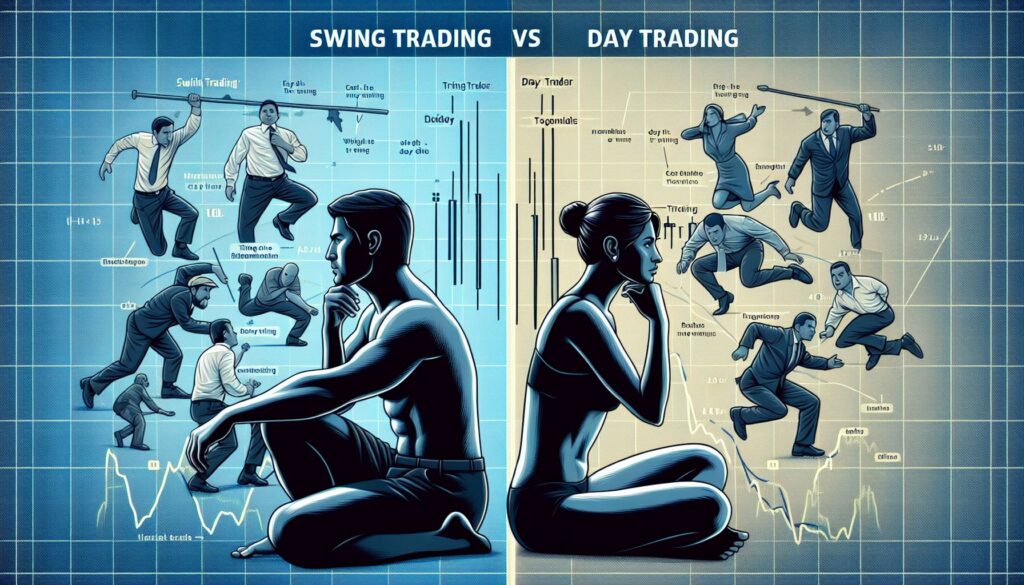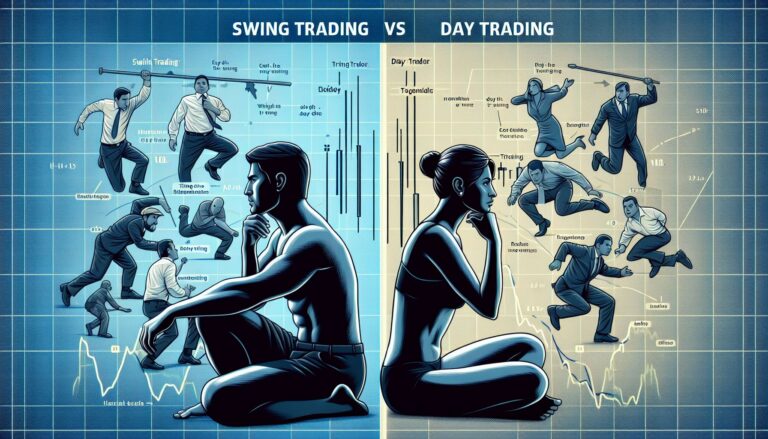Swing Trading vs Day Trading: What Active Traders Need To Know
Traders today have a wealth of trading strategies to choose from, each with its own unique set of advantages and disadvantages. Arguably, two of the most popular techniques are swing trading and day trading. Although they share some similarities, the differences between the two are worth understanding to maximize their potential benefits.
What is Swing Trading?
Swing trading is a medium-term trading strategy used by traders who seek to profit from price swings in the market over a period of several days to weeks. Swing traders take advantage of technical indicators and fundamental analysis to predict market trends, and they often hold positions overnight.
This strategy requires patience and a solid understanding of market sentiment, offering potentially larger profits as it takes advantage of the full market swing rather than just daily price fluctuations.
What is Day Trading?
On the other hand, day trading is a short-term trading strategy used by traders who buy and sell financial instruments within the same trading day. The objective is to exit all positions before the market closes to avoid unmanageable risks and negative price gaps between one day’s close and the next day’s price at the open.
Day trading is admittedly intense and requires a lot of focus. However, when done right, day trading allows traders to profit from small price movements in liquid stocks or currencies within a single day.
Comparing Swing Trading and Day Trading
Time investment is one of the most significant differences between swing trading and day trading. While day trading is a full-time job requiring constant attention, swing trading allows for more flexibility, as positions can be reviewed and adjusted a few times per week.
Another crucial factor to consider is capital requirement. Usually, day trading demands more considerable capital since it relies on minor price fluctuations. Swing trading, on the other hand, is less capital intensive, aiming to capture larger price movements over a more extended period.
Lastly, there’s the matter of risk. Day traders mitigate overnight risk as they close positions at the end of the trading day. Meanwhile, swing traders, with their overnight hold strategy, expose themselves to overnight risk wherein market turns could happen while they are away.
Choosing The Right Trading Style for You
The choice between day trading and swing trading boils down to personal preference, lifestyle, and financial goals. If you have the time and patience to watch the markets all day and enjoy quick decision making, then day trading might be your preferred style.
In contrast, if you prefer to take more time analyzing market trends, have a demanding full-time job, or simply do not wish to be stuck in front of a trading screen all day, swing trading could be the better option.
Wrapping up
In conclusion, both swing trading and day trading offer excellent opportunities for active traders. They each present potential profit opportunities, and they demand different degrees of time and attention. Understanding your risk tolerance, the amount of time you can dedicate, and your financial objectives will guide you in making the correct choice between swing trading and day trading. No matter your choice, a well-planned strategy, in-depth market understanding, and disciplined execution remain vital to successful trading.

